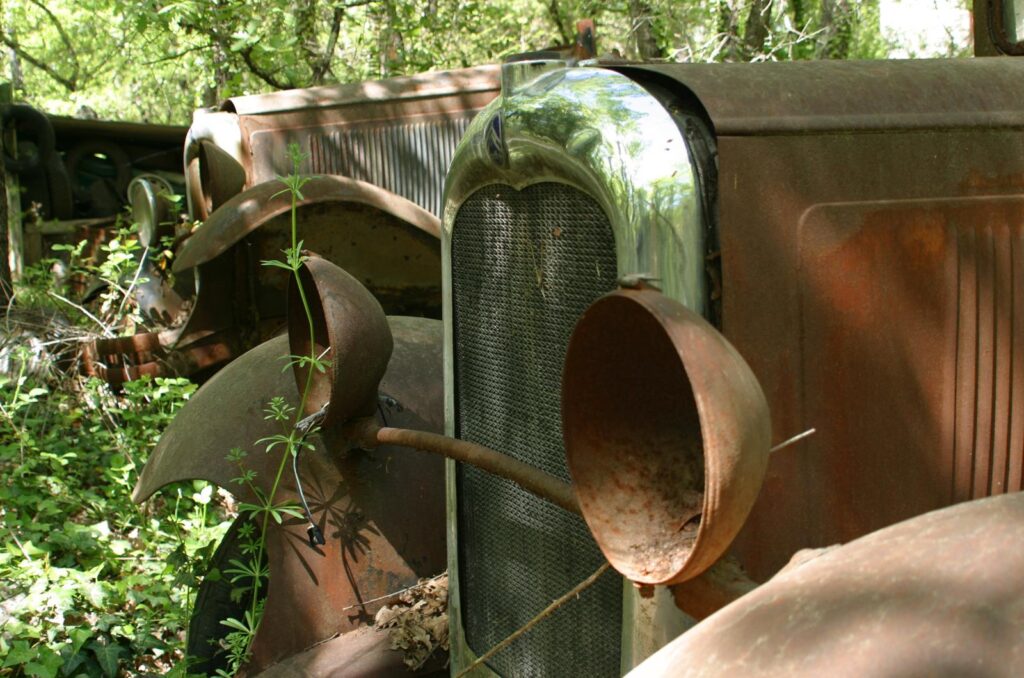How to prevent rust in your classic car
Simple – keep it in a heated, de-humidified garage and never take it out on the road!
However, if that is not an option for you or you actually want to drive your classic then here are some other thoughts.
What is going to kill your classic is long exposure to dampness and oxygen. There is a temptation to think that simply parking your car away in a garage will keep it in tip top condition. Sadly that is not the case. Garages can be damp. They also often have very poor ventilation. The net result is that you will be leaving in an environment perfect for the development of rust – the dampness in the air will condense out on your car and just sit there rotting it away.
The key here is to keep the vehicle dry. Good ventilation in your garage will ensure that any damp air is blown away and will help dry any moisture that has accumulated on your car. Similarly, putting your car in a car port will also help reduce the scourge of rust. The roof will keep the worst of the weather off your vehicle whilst the open side will allow great ventilation ensuring and water deposited on the car will dry off quickly and naturally.

That said if you do not have access to either a garage or a car point, there is a great temptation to use a plastic sheet. Whilst this will keep rain off of your car, it will also trap moisture under the sheet which will drip back onto it – if you want or have to use a cover make sure you get a breathable one which help to elevate this issue. Finally, it is always best to store your car on a hard surface. Soft ground will contain moisture and worst still you might have vegetation grow under it which will trap moisture against the body work.
It is also always worth checking your car for signs of water ingress. Once it is in, it is in and it will start to eat away at the metal work. Check the foot wells and the boot carpets to make sure they are bone dry – if they are not, they will act like a sponge keeping moisture against the metal floor of your car. Check the seals around the windows, doors and sunroof. If these fail, water will be getting in and accumulating somewhere. Also, check the engine bay for signs of deterioration especially the bulkheads and the battery housing for corrosion.
So what if you want to use your car?
In winter the real worry is road salt. This combines with water to create a much better medium for the chemical process of oxidation to occur. Salt is a killer – just ask anyone with a car by the seaside. If your classic is exposed to road salt the best solution is to jet wash it off as soon as you can. Whilst this does mean exposing the underside of the car to jet wash water, the corrosive effects of the water will be much, much lower than that of any water infused with road salt. If you leave your car out in the fresh air after jet washing, it should dry naturally and then be ready to go back into the garage.
Another thing to look out for is mud. Remove any mud deposited on the underside of the car. Mud contains water and will hold it against any metal surface it is sitting on. This creates the perfect conditions for rust to develop.
The key point here is that to avoid the formation of rust, metal surfaces must be kept free, as much as practically possible, from exposure to water. Lanocare’s LS20 spray has been specifically designed for this very purpose – providing an effective way of protecting metal surfaces from corrosion. Once applied, it forms a thin but durable waterproof coating which seals the surface and protects it from exposure to the elements. The lanolin present in our products further penetrates any surface micro-fissures expelling and replacing any water molecules present. These surface imperfections are especially vulnerable to oxidisation.
A single treatment of Lanocare will last up to a year and will easily protect your classic from the rigors of a British winter